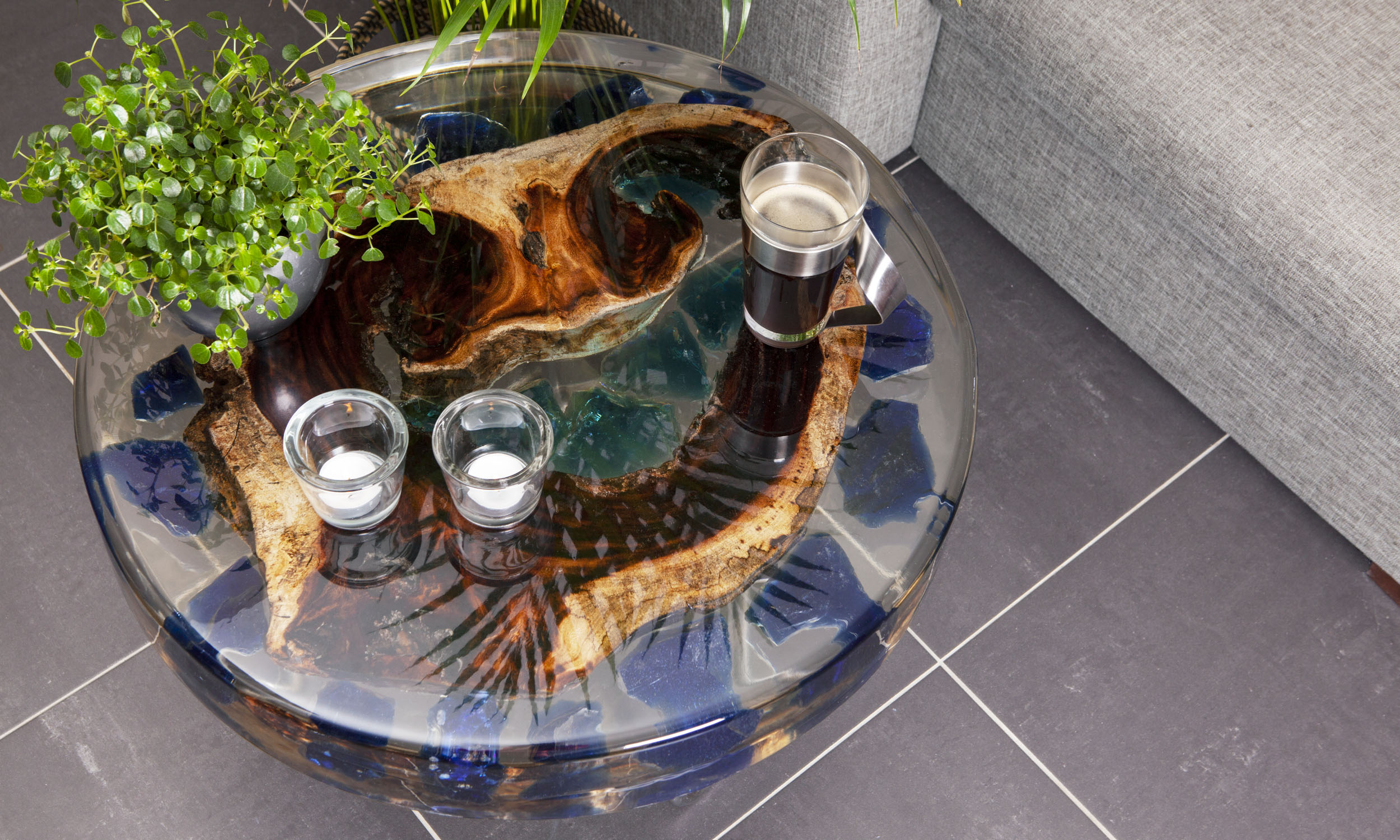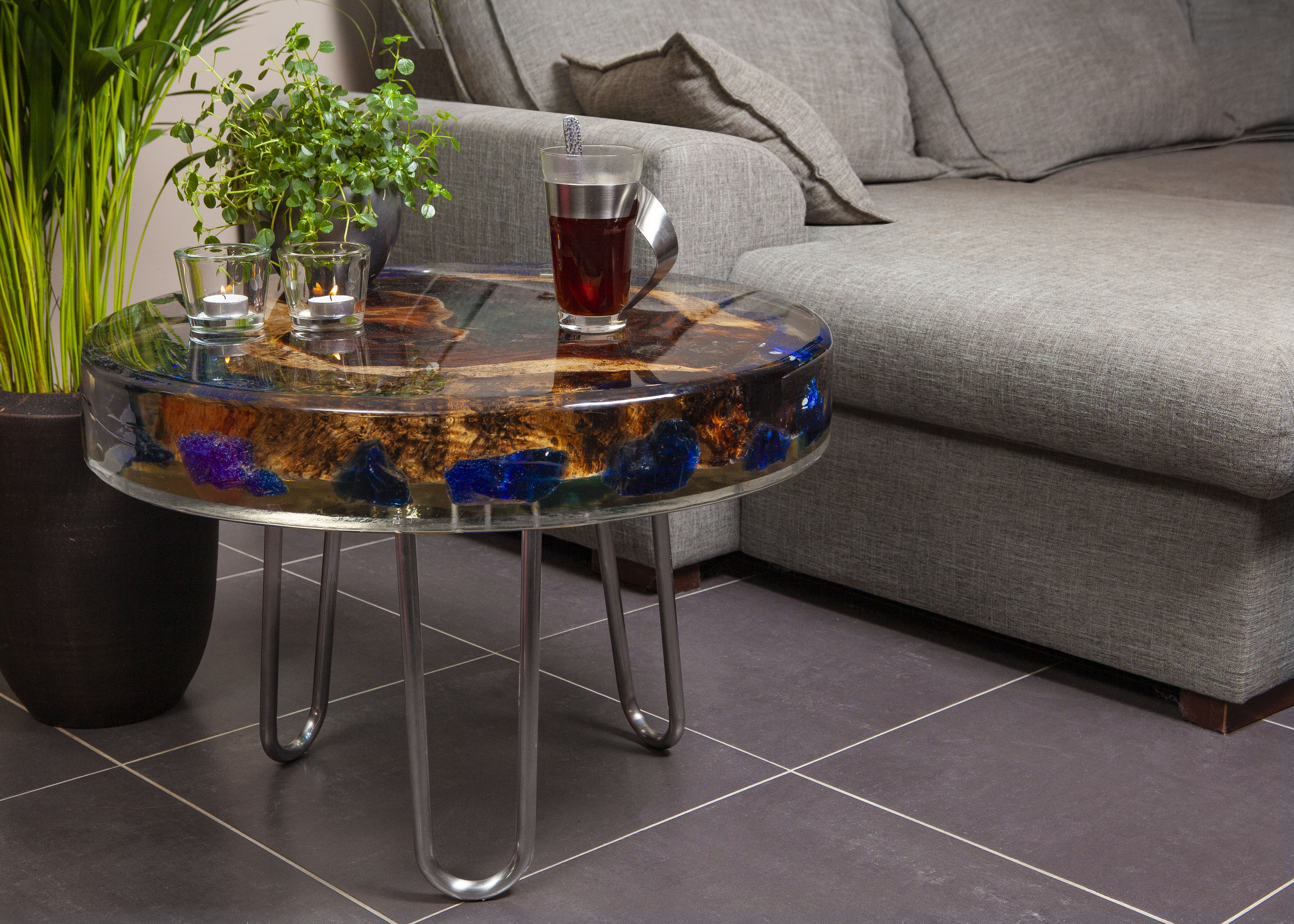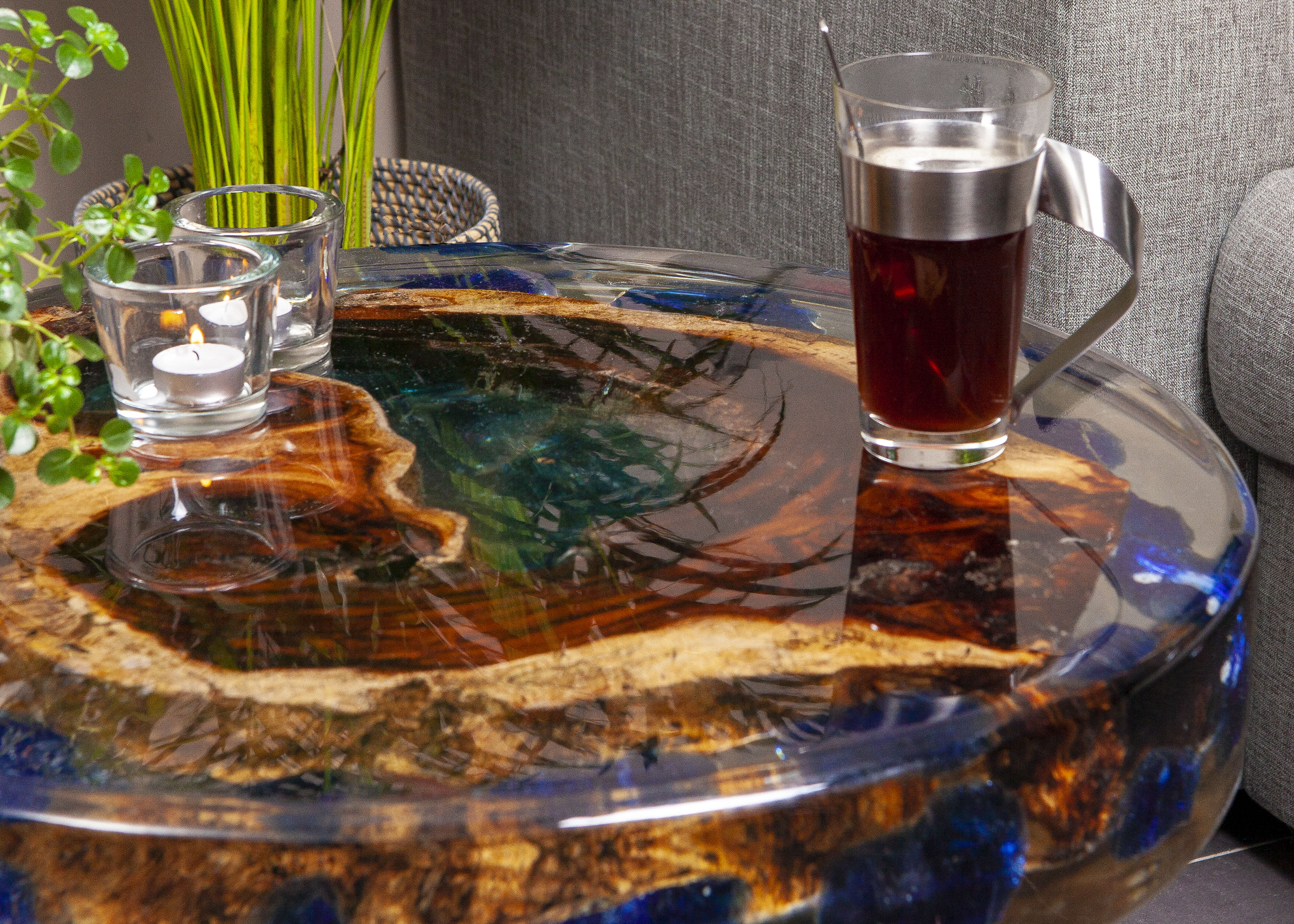
In this article, you will read step by step how to make a unique epoxy coffee table with a floating wood piece. Create a real eye-catcher for your home, business space or restaurant with Polyestershoppen products! Below you will find a list of supplies, a handy instruction video and a complete guide to give you a hand in making this beautiful epoxy coffee table.
Making an epoxy coffee table is easy using the following step by step plan:
For the round epoxy coffee table, we cut a piece of wood to size and screwed a plastic sheet around it. This created a custom-made tray with a wooden bottom and plastic sides. Then pour a thin layer of 2-3 mm epoxy casting resin over the whole thing.
To ensure that the table will later detach from the base and nylon wall, we smear it with PVA. We do this with a flat brush. Let the PVA evaporate completely before pouring. This usually takes a couple of hours.
We are going to pour the bottom first. This will be the bottom of the table. For this epoxy coffee table, we cast a bottom of about 2 cm. This can be done with Resion UV Epoxy Casting Resin, but can also be done with the casting resin for large castings. The advantage of Resion casting resin is that it is ready for another layer after 12-24 hours. However, you should make sure the temperature of the resin is not too high, so make sure the ambient temperature is around 18 to 20 degrees.
For the best results, it is best to vent the epoxy in a vacuum dome after mixing. This ensures that the epoxy is completely air-free. Without a dome, it is recommended to vent the epoxy with a gas burner immediately after pouring.
To ensure that the piece of wood looks nice when it is poured in, you should apply primer to it. This will prevent air from escaping from the wood during the pouring process. Also, make sure the wood is thoroughly dry. To primer the wood, apply epoxy casting resin several times with a brush. Make about 300 grams of epoxy casting resin each time put it richly into the epoxy and vent with a burner.
There may still be a lot of air coming out of the wood, so the epoxy may not look super nice the next day. Sand the epoxy with 60- or 80-grit sandpaper so that you sand up all the air bubbles. Then brush the wood back into the epoxy. Repeat this process until all parts are completely covered in epoxy.
Place the wood in the mould. Now pour the first layer of epoxy casting resin for large castings. Make about a total of 3 to 5 kg of epoxy. This may be done all at once, but can also be done in several batches.
If possible, vent all the epoxy with a vacuum kettle. Bleed the epoxy with the burner after pouring if there are visible air bubbles. You can also do this 2 hours after pouring, so check the epoxy regularly.
In addition to the wood, you can also sink glass shards into the mould, for example. This also saves a lot of epoxy because it reduces the volume and gives a nice effect. Let the epoxy cure for at least 24 hours after this casting.
TIP: do you still see an air bubble the next day? Don't panic! Drill a hole in the epoxy up to the air bubble, when you continue pouring you won't see any of this.
We now pour the largest layer and pour to the top of the wood. Make epoxy casting resin for large castings again in one go or in several passes. Vent the epoxy with a vacuum dome if necessary.
Pour the epoxy into the mould to above the wood. Vent it with the burner if necessary. This can still be done as long as the epoxy is liquid. This is normally 2 to 3 hours after mixing the epoxy. Let it cure for 48 hours.
Now that the epoxy coffee table is fully cast, it can be unloaded from the mould. Unscrew the nylon plate and pull it off. Using a flat screwdriver or a chisel, carefully try to get space between the bottom and the epoxy. Tap with a rubber mallet if necessary. Now apply force in several places by inserting mixing spatulas, for example.
Once the table has been released from the mould, the legs can be fitted. In epoxy, the screws just stay firmly in place. Of course, it's best to let the screws protrude into the wood because otherwise you can see it. Wrap the legs with protective material such as plastic film to prevent epoxy getting on them later.
After the table is on legs, you can sand away any unevenness in the side and surface of the table. Do this with a coarse grit. We used a router to round off the sharp corner, but this can also be done with 80-grit sandpaper if necessary.
To protect the surface of the table from hot cups of coffee, we pour Ultra-Cast XT Epoxy over it. This is heat-resistant to around 70-75 degrees. Make about 500 to 700 grams. Pour it over the surface of the table and let it run completely over the sides. Smooth regularly with a flat brush for a nice distribution. Regularly smooth the drops of epoxy on the underside of the table as well. Vent the epoxy with a blowtorch.



Now it's time to enjoy your table! Allow the Ultra-Cast to cure for at least 1 to 2 weeks before it reaches its full strength and heat resistance. If the top has become less beautiful over time, we have a complete guide with video to polish it like new again!
Here you can find all 9 related articles on this topic. Mis je informatie om aan de slag te gaan met jouw klus? Neem dan contact met ons op.
Do you have a specific question? Call one of our specialists for free advice +3185 0220090
